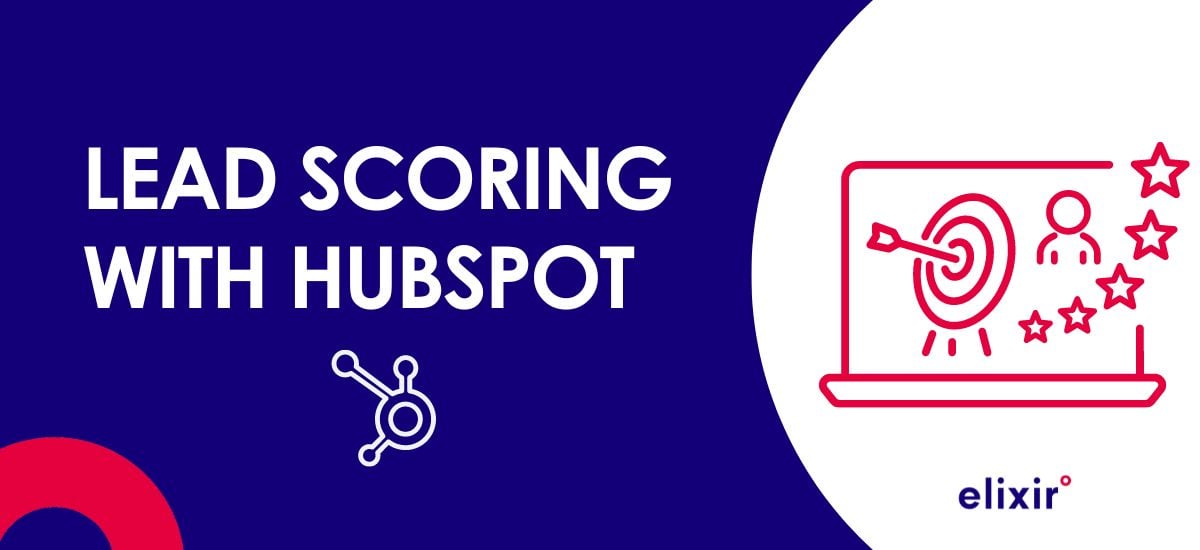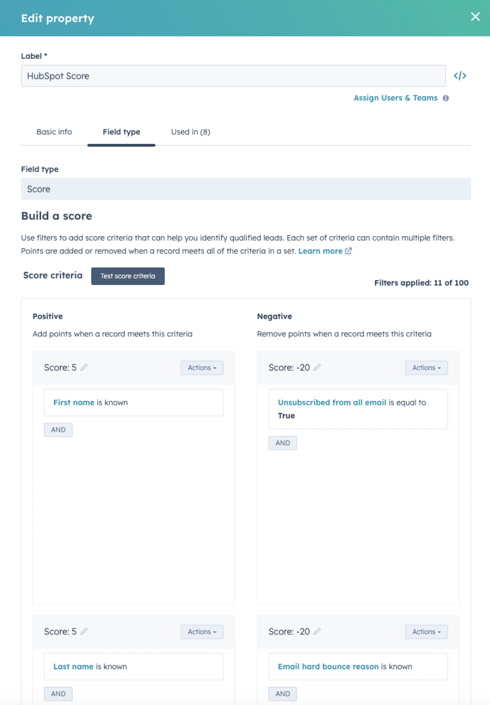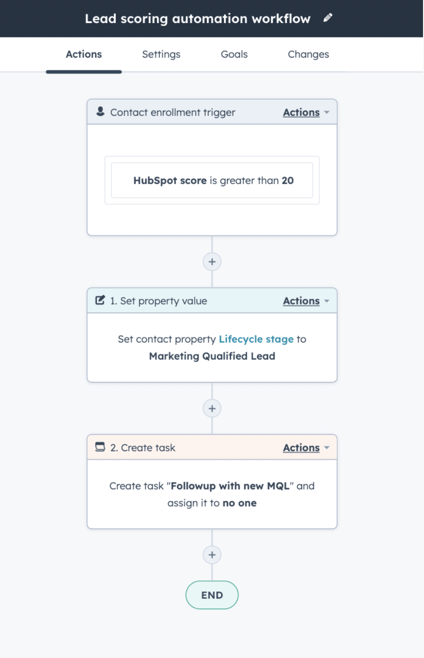A Roadmap for Lead Scoring in HubSpot crm to align sales & marketing

The connection between marketing and sales is crucial for a company's success. A powerful way to facilitate this collaboration is by using lead scoring, a process that assigns scores to leads based on their profile and behavior. Every minute spent chasing leads that won't convert is a minute wasted. That's where HubSpot's Lead Scoring steps in, offering a potent tool to help you separate the promising prospects from the tire-kickers.
In this blog post, we will delve into the intricacies of HubSpot's Lead Scoring system, from understanding its core principles to implementing best practices, enabling you to supercharge your lead management, boost your conversion rates & establishing strong alignment between marketing and sales .
Whether you're new to HubSpot or a seasoned user looking for an edge, this blog is your roadmap to a more effective and results-driven lead nurturing strategy
Overview
How Lead Scoring works in HubSpot
How to set up the Lead Scoring Process in HubSpot: from Lead to MQL
Effectively Managing Unqualified Leads
Is HubSpot Lead Scoring automatically calculated
Can HubSpot Lead Scores be negative?
The best practices for Perfect Alignment between Marketing and Sales
How Lead Scoring Works in hubspot: a detailed overview
Understanding how lead scoring operates within HubSpot is crucial for effective lead management and conversion optimization. Here's a comprehensive breakdown of how lead scoring works specifically in the HubSpot platform:
- Data Gathering for Informed Scoring: The lead scoring process in HubSpot commences with comprehensive data collection. This data includes lead demographics, online behaviors, email interactions, website visits, form submissions, and more.
- Point Value Assignment: HubSpot assigns point values to every lead interaction, reflecting their significance. For instance, downloading a premium eBook may yield more points than a general website visit.
- Custom Scoring Rules: HubSpot allows for the creation of customized scoring rules. These rules dictate how points are allocated based on specific lead actions. For instance, attending a HubSpot-hosted webinar may result in a more significant point increase.
- Real-Time Score Updates: As leads engage with your content and interact with your HubSpot account, their scores are updated in real-time. This real-time updating ensures that you have an up-to-the-minute understanding of their level of engagement.
- Prioritizing Engaged Leads: High-scoring leads in HubSpot are typically deemed more interested and engaged with your offerings. As a result, sales and marketing teams prioritize these leads for further engagement and personalized outreach.
- Tailored Nurturing Strategies: In HubSpot, high-scoring leads receive tailored lead nurturing strategies that align with their specific interests and engagement level.
- Continuous Monitoring and Optimization: The lead scoring process in HubSpot is dynamic and requires ongoing monitoring and optimization. The ever-evolving nature of lead interactions may necessitate periodic adjustments to scoring rules to ensure ongoing accuracy.
How to set up Lead Scoring Process in hubspot: for Transitioning from Lead to MQL
The lead scoring process is a critical step in efficiently transferring a lead from marketing to sales. Here are the steps to achieve this:
1. Demographic Data
Criteria such as industry, company size, decision-maker role, etc., should be taken into account to assess the lead's relevance to your business.
2. Online Behaviors
Interactions with the website, content downloads, email openings, social media engagement, etc., should be tracked to evaluate the lead's engagement with your brand.
3. Interest Score
By assigning points to each criterion, a cumulative score is obtained, indicating the lead's level of interest and qualification. You will see below how to setup the lead scoring property in HubSpot

(HubSpot score property setup)
4. QUALIFICATION THRESHOLD
Once a lead reaches a predefined score, they become an MQL (Marketing Qualified Lead) and are transferred to sales for personalized follow-up.
In order to automate the lead lifecycle stage, you will use a powerful no-code tool included in HubSpot: the workflows (see screenshot below for simple automation)

(Lead scoring automation workflow)
Effectively Managing Unqualified Leads
It is inevitable that some leads may not meet the qualification criteria or are not yet fully qualified for sales engagement. To effectively manage these leads, consider the following approaches:
1. Complete Disqualification
If a lead does not meet any of the qualification criteria, they can be completely disqualified, and no further marketing contact is made.
2. Lead Nurturing
For leads showing potential but not yet meeting the required criteria, lead nurturing is an effective approach. Placing them back into a lead nurturing process allows marketing to continue nurturing the relationship and aiming to increase their score to become potential MQLs in the future.
Is HubSpot Lead Score Automatically Calculated?
HubSpot's Lead Score is an essential tool for assessing lead quality, but many wonder if it's automatically calculated. The answer lies in the combination of automatic and manual processes that contribute to the Lead Score.
#Automatic Calculation in hubspot crm: Elements overview
- Pre-Defined Scoring Properties: HubSpot's default properties play a crucial role in the automatic calculation of Lead Score. Activities such as email opens, website visits, and content downloads are automatically considered, impacting the lead's score.
- Behavioral Tracking: HubSpot uses behavioral tracking to capture lead interactions, which are factored into the automatic Lead Score calculation. Frequent content engagement or visits to specific pages can positively influence the score.
- Recency of Activities: The recency of lead activities is a significant factor. Recent interactions have more weight in the automatic calculation, indicating the lead's current level of interest.
#Manual Adjustments:
However, HubSpot's Lead Score isn't solely automatic. Customization and manual adjustments are available to tailor the Lead Score according to your specific needs.
- Adjustment Criteria: You can manually tweak the Lead Score by adding or deducting points based on your criteria. For instance, attending webinars or requesting demos can increase a lead's score, while unsubscribing from emails or prolonged inactivity can decrease it.
Can HubSpot Scores Be Negative? A Closer Look
One common question that arises in the context of lead scoring is whether HubSpot scores can have negative values. Let's delve into this query to gain a clearer understanding.
Positive Scores in HubSpot Leadscoring:
HubSpot primarily employs positive scoring values for lead interactions. This means that every action or interaction a lead takes is assigned a positive point value. These values accumulate to reflect the lead's level of engagement and interest in your business.
Negative Scoring in Practice:
While HubSpot's default scoring system does not include negative scores, it's essential to note that negative scoring can be achieved in an indirect manner. For instance, if a lead performs actions that indicate disinterest, such as unsubscribing from your emails or consistently ignoring your content, their positive score may remain stagnant, effectively signaling a lack of engagement.
Customization Possibilities:
HubSpot's flexibility allows for the creation of customized scoring rules, which can indirectly mimic negative scoring. By assigning a negative value to specific interactions, you can reflect actions that detract from a lead's engagement.
The best practices for Perfect Alignment between Marketing and Sales: prepare leadscoring strategy
1. Alignment of Objectives
One of the primary challenges in uniting marketing and sales is to share common objectives. This means both teams must work together to generate leads and convert them into customers. Achieving this requires close collaboration to define clear lead qualification criteria and determine the point at which a lead should transition from marketing to sales.
2. Defining Qualified Leads
Clear definition of qualified leads is crucial to avoid misunderstandings between marketing and sales teams. Both teams must agree on criteria that qualify a lead, such as:
- demographic data
- online behaviors
- interactions with content.
Once these criteria are established, the lead scoring process can be implemented to evaluate and score each lead based on relevance and interest.
3. Seamless Communication
Transparent communication between marketing and sales teams is a fundamental pillar of perfect alignment. Regularly sharing information about leads and their progression in the sales process allows both teams to stay informed, enabling them to make data-driven decisions at every stage of the buyer's journey.
4. Performance Analysis
Frequent analysis of lead performance stands as a critical driver in the ongoing enhancement of the lead scoring process. Through close collaboration, marketing and sales teams can identify gaps in their strategies and make necessary adjustments, leading to a more refined approach that generates a higher number of qualified leads and boosts conversion rates. This proactive approach to data-driven decision-making empowers both teams to stay agile and responsive in a dynamic market environment, ensuring sustained growth and competitiveness in the industry.
Conclusion
In this in-depth exploration of HubSpot's lead scoring system, we've uncovered a powerful tool for optimizing lead management and boosting conversions. HubSpot's lead scoring involves data collection, point assignments, customization, real-time updates, and prioritizing highly engaged leads, ultimately increasing conversion potential.
We've also highlighted the setup process for transitioning leads from marketing to sales teams, ensuring only qualified leads move forward.
By implementing these best practices and leveraging HubSpot's lead scoring capabilities, your business can expect improved conversion rates, streamlined sales and marketing, and enhanced competitiveness in your industry. Use these insights to perfect your lead scoring strategy and watch your business thrive.
Want to know more about aligning Markting & sales? Download our free guide on 6 key actions to align Marketing & Sales → Download it here

![[BE] 6 Keys cover on book](https://blog.elixir-solutions.net/hs-fs/hubfs/%5BBE%5D%206%20Keys%20cover%20on%20book.png?width=874&height=620&name=%5BBE%5D%206%20Keys%20cover%20on%20book.png)